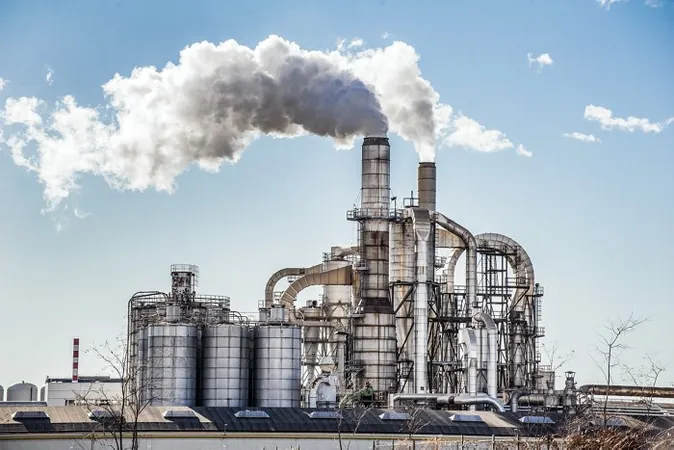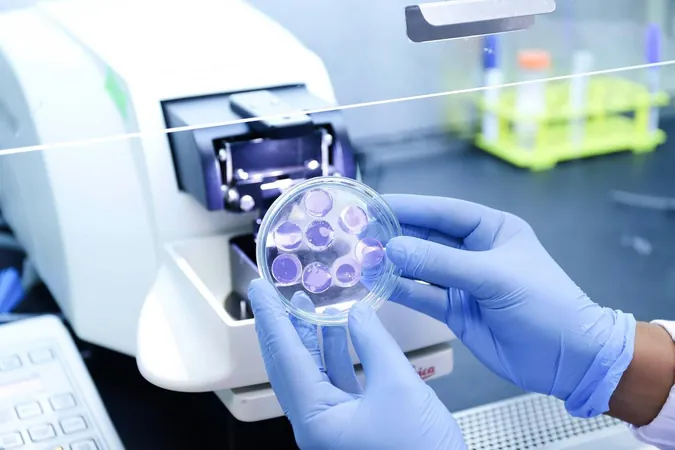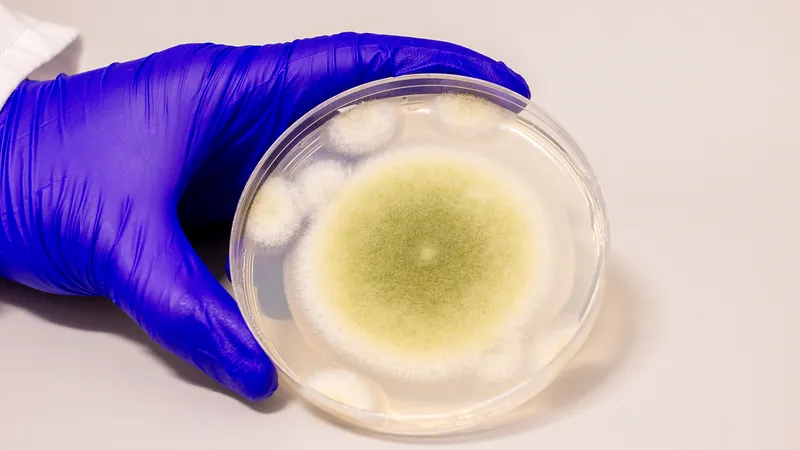
Game-Changer in Carbon Dioxide Reduction: A Simple Solution to a Complex Problem
2025-06-18
Author: Mei
Revolutionizing Carbon Capture Technology
Imagine a world where carbon dioxide is not just a greenhouse gas but a valuable resource! The electrochemical carbon dioxide reduction reaction (CO2RR) holds the key to making this vision a reality. This innovative process captures CO2 from the atmosphere and converts it into useful chemicals and fuels. When powered by renewable energy, the resulting products are considered carbon neutral, potentially redefining our approach to climate change. However, the technology is still in its developmental phase, facing several significant challenges.
Tackling the Salt Problem: A Breakthrough Method
One of the most exciting advancements comes in the form of the zero-gap membrane electrode assembly (MEA) electrolyzer, celebrated for its superior energy efficiency and capability to sustain high current densities. Yet, it faces a critical issue: the formation of bicarbonate salts in the cathode chamber, which can impede CO2 flow, leading to system failures.
A recent study has introduced a surprisingly straightforward solution—bubbling CO2 through a weak acid solution. This simple tweak dramatically enhances the system's durability, extending operational longevity from a mere 80 hours to an astonishing 4,500 hours!
Understanding the Science: Why Bicarbonate Forms
As explained by coauthor Ahmad Elgazzar from Rice University, the salts form primarily due to cations like potassium crossing over from the anode electrolyte into the cathode chamber. This migration leads to the creation of carbonates or bicarbonates at elevated pH levels, which crystallize and block gas flow channels.
Traditionally, CO2 is bubbled through water to keep membranes hydrated, but this approach ironically fosters salt formation. Understanding this dilemma, the researchers proposed an acid solution to help dissolve the salts.
The Sweet Spot: Acid Concentration Matters
By substituting the water humidifier with a weak acid—such as hydrochloric, formic, or acetic acid—the team discovered that a low concentration of about 0.05 mol effectively removes salts without disrupting the reaction.
Impressive Results: Labs to Real-World Applications
The results were groundbreaking! Using a silver catalyst, the researchers achieved 2,000 hours of stable operation in the lab and an impressive 4,500 hours in a scaled-up reactor. This represents a staggering 50-fold improvement over the conventional water humidification method. Moreover, other catalysts like zinc oxide and copper oxide also showed promising results, producing different CO2RR products.
The Road Ahead: Challenges Remain
First author Shaoyun Hao emphasizes that while their method is a significant advancement, other factors also influence the stability of CO2RR electrolyzers. Expert Mirza Galib from Howard University, not involved in the study, underlines that while this represents progress, further research is essential to enhance conversion efficiency, product selectivity, and membrane stability for commercialization.
The future of carbon capture technology has never looked more promising! Stay tuned for more breakthroughs as researchers innovate for a greener planet.




 Brasil (PT)
Brasil (PT)
 Canada (EN)
Canada (EN)
 Chile (ES)
Chile (ES)
 Česko (CS)
Česko (CS)
 대한민국 (KO)
대한민국 (KO)
 España (ES)
España (ES)
 France (FR)
France (FR)
 Hong Kong (EN)
Hong Kong (EN)
 Italia (IT)
Italia (IT)
 日本 (JA)
日本 (JA)
 Magyarország (HU)
Magyarország (HU)
 Norge (NO)
Norge (NO)
 Polska (PL)
Polska (PL)
 Schweiz (DE)
Schweiz (DE)
 Singapore (EN)
Singapore (EN)
 Sverige (SV)
Sverige (SV)
 Suomi (FI)
Suomi (FI)
 Türkiye (TR)
Türkiye (TR)
 الإمارات العربية المتحدة (AR)
الإمارات العربية المتحدة (AR)